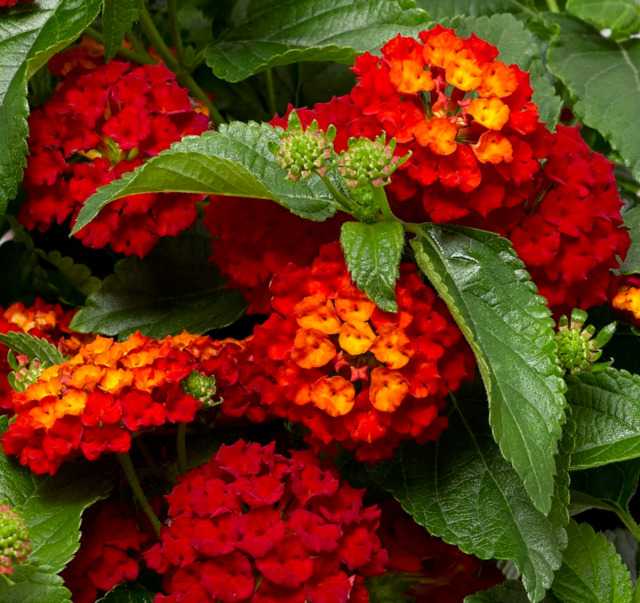
How to Grow Lantana
Share
by Ken Lain, the mountain gardener
There are few plants that give more bang for their buck than Lantana. Related to verbena,

this flowering shrub can be grown as a perennial in frost-free zones or as an annual in colder climates. Lantana is a workhorse in the landscape, with clusters of tiny flowers that bloom continuously from planting until frost, or nearly year-round in regions where it grows as a perennial. Lantana colors include pink, orange, red, yellow, lavender, and white, occurring in single, bicolor, or multicolor patterns.
Native to tropical regions of the Americas and South Africa, the Lantana plant thrives in hot, dry conditions, adding bright color to beds, borders, and containers. The flowers attract pollinators such as butterflies, bees, and hummingbirds. Here’s how to grow and use lantana in your yard.
Botanical Name Lantana camara
Common Names Lantana
Plant Type Shrub (Annual or Perennial, depends on variety)
Mature Size To 6 feet tall; to 6-foot spread (depends on variety)
Sun Exposure Full sun
Soil Type: Well-drained soil
Soil pH 6.0 to 7.0; slightly acidic to neutral
Bloom Time June to September
Flower Color: Red, Orange, Yellow,
Hardiness Zones 7 to 11 (USDA)
Native Area: Central & South America
Toxicity: Toxic to Pets
How to Grow Lantana
The popularity of Lantana is no surprise. They are beautiful, easy to grow with minimal care. Even major storms have little effect on these hardy shrubs. They thrive in harsh environments, such as polluted urban settings, windy hilltops, and crusty dry soil. They're also resistant to insects, drought, and stress. The bushes require little attention, so even weekend gardeners can enjoy their stunning flowers and resident butterflies.
Lantana enjoys well-drained soil, medium moisture, and the more sun this beautiful bush has, the more flower it produces. Blend in Watters Premium Mulch before planting to soften mountain soils, and increase root production.
In colder climates, Lantana often dies back to the ground in winter and is treated like a herbaceous perennial. And in warmer Arizona climates, they can be pruned back, in the same way, to keep them under control and stimulate better blooming.
There are no serious pest or disease problems with the Lantana. However, spider mites can be an issue, nematodes and grubs are sometimes found.

Light
Lantana requires full sun.
Soil
This plant thrives in any average, well-drained soil that gets any amount of moisture.
Water
This plant likes a medium-moisture environment and will do poorly in boggy locations that don't drain well. They will thrive on 1/2 inch of water by rain or irrigation each week.
Temperature and Humidity
Lantana thrives throughout its hardiness zone range; Certain Varieties are annual in our Zone 7
Fertilizer
Feed with 7-4-4 All Purpose Food three times per year for amazing flowers. This natural food is spread like salt-and-pepper around the base of the bush every Easter, July 4th, and Halloween for amazing results.
Varieties of Lantana
Miss Huff Lantana: This hardy variety thrives in the Arizona sun, showcasing vibrant clusters of orange, pink, and yellow flowers that butterflies and hummingbirds adore. It grows quickly into a lovely shrub. Plant it in full sun
Casablanca Lantana: A cold hardy selection with a natural spreading habit for beds or as a ground cover. Repeat blooms during warm season.
Mary Ann Lantana: Vibrant multi-color orange, yellow and pink flower clusters bloom from spring to late fall on this variety prized for its improved cold hardiness and compact growth habit. A great choice for a punch of color in mass and hillside plantings and patio containers.
Pruning
The spent flowers from lantana should be removed promptly after flowering to stimulate continued blooming right up to frost. This plant grows fast, and pruning it down to ground level each spring stimulates vigorous growth and profuse flowering.
Planting
The ideal months to plant a new Lantana on your own are best April through October. How to Plant Lantana
